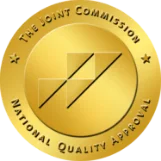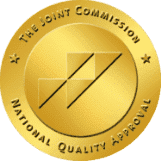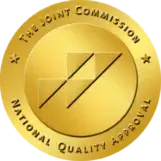Pain Awareness Month, held annually in September, is a way to educate people and offer resources to those who live with the agonizing burden of chronic pain. It is also a good time to find alternatives to opioids for treating and dealing with pain.
There is nothing more emotionally and physically crippling than pain. Even short-term, or acute pain associated with injury can stop us in our tracks. Chronic, long-term pain associated with injury and some illnesses is particularly debilitating.
Though it provides little comfort, it is important to say that people battling pain are not alone. An estimated 100 million Americans deal with chronic pain, according to the National Institute on Drug Abuse.
It is also the leading cause of disability in the Untied States.
The toll that this struggle takes on people is not simply just a physical one. Pain can lead to considerable mental health problems, including depression, anxiety, an inability to concentrate and, in some cases, substance abuse.
Chronic Pain and Substance Abuse
The desire to relieve our pain is a basic human instinct. We don’t want to hurt and looking for ways to end the suffering is likely written into our DNA. This is one reason it’s easy to get trapped in a cycle of substance abuse, dependency and, potentially, develop an addiction to prescription painkillers.
Prescription opioids, medications like Oxycontin, Percocet, Vicodin, and others are very effective painkillers.
This class of medications, as well as illegal opioids like heroin, bind to receptors on the spinal cord and in the brain and do two things:
- They block or “quiet” pain signals the brain naturally sends and
- They cause a rush of dopamine, a neurochemical associated with feelings of pleasure and relaxation
However, even after just a few weeks, a person taking prescription painkillers will start developing a tolerance, meaning it takes more of the drug to relieve the same level of pain.
From here, it’s easy to see how anyone dealing with pain might start misusing their prescription or mixing it with other substances like alcohol to get some relief. This can be especially problematic, as mixing pain medication and alcohol can be dangerous and possibly deadly.
As this is happening, the body is also becoming accustomed to large surges of dopamine, which alters the brain’s chemistry, and is a lead-in to physical dependency and full-blown addiction.
Related: What Are the 5 Stages of Addiction?
Chronic Pain and the Opioid Epidemic
It’s widely accepted that the over-prescribing of opioid painkillers, starting in the late ’90s, led to a national epidemic of addiction and overdoses. Nearly 500,000 overdose deaths from 1999 to 2018 involved an opioid, according to data from the Centers for Disease Control and Prevention (CDC).
Peak numbers in 2012 reached more than 255 million opioid prescriptions, as outlined in the CDC Opioid Prescribing Rate Maps.
Put another way, 81 people out of every 100 had an opioid prescription. That also means that in nearly every medicine cabinet across the country, there were leftover opioids for potential abuse.
Though prescription rates have declined as of late, in 2018 there were still more than 168 million ready to be filled.
Certainly, there is a place for this powerful class of painkillers, especially for cancer-related, end of life pain, or for short-term treatment of acute pain associated with severe injury or surgery.
With such a high potential for abuse and addiction, though, many health care professionals are encouraging chronic pain patients to consider alternatives to opioid painkillers.
8 Alternatives to Opioid Painkillers For Treating Pain
1. Nonsteroidal Anti-Inflammatory Drugs (NSAIDs)
Nonsteroidal Anti-Inflammatory Drugs (NSAIDs) are over-the-counter pain medications, such as ibuprofen, Aleve and aspirin that can be effective for the treatment of acute pain.
These drugs are not addictive and may be a better option than taking opioids to provide quick pain relief for many people.
2. Acetaminophen
Tylenol, the brand name for acetaminophen, is also a useful over-the-counter pain alternative treatment. While, it’s not necessarily effective for all types of pain, it works well for headaches and is easier on the digestive system than NSAIDs.
Do not mix acetaminophen and alcohol, however, as it can cause liver damage.
3. Corticosteroids
Only available by prescription, corticosteroids, medications like cortisone and prednisone, are effective in treating inflammation and pain, usually in combination with other drugs prescribed by your physician.
They do, however, sometimes cause uncomfortable side effects, but are not considered habit forming or dangerous as long as the prescription instructions are followed.
Corticosteroids are also available as an injection by a doctor to reduce inflammation and pain at specific areas of the body affected by an injury.
4. Chiropractic Therapy
Some people respond really well to chiropractic treatment for chronic pain, especially for back pain.
Chiropractic Therapy involves non-surgical treatments focused on the alignment of the spine and the musculoskeletal system.
Properly aligning the back through chiropractic “adjustments” can have an impact on reducing pain throughout many parts of the body.
5. Physical Therapy
The focus of Physical Therapy relies on strengthening core areas of the body to reduce pain and the likelihood of further injury.
Physical Therapy is an excellent way to learn proper techniques as it relates to specific movements, whether they are sports or job related.
6. Meditation and Breathing
Though some might scoff at the idea, research continues to show that meditation, in particular, mindful meditation techniques can be extremely useful in the treatment of chronic pain.
A regular meditation practice has shown to activate areas of the brain involved in the processing of pain and has the effect of reducing pain intensity throughout many parts of the body.
Meditation is also centered on deep and focused breathing and proper breath work, which instills a sense of calm and relaxation – both important aspects for easing the symptoms of pain.
7. Yoga
Combining a little bit of meditation with yoga is an excellent one-two punch for combatting chronic pain.
Not only does regular yoga increase a person’s flexibility and reduce inflammation, it also builds core strength, which helps many suffering from lower back pain.
8. Exercise
For people living with chronic pain, exercise might be the last thing they think about doing to help them feel better. Many people consider the mere thought of exercising to be painful.
The trick is to start out at a slow pace and gradually work up to higher intensity levels. Simply walking is a great low impact way to get more exercise.
The mental health benefits of exercise will improve mood to help reduce pain, but even more importantly, exercise promotes the production of endorphins, which are known as the body’s natural painkiller. Increasing endorphins will help the body to decrease pain.
Pain Awareness Month in September
Pain Awareness Month was established in 2001 by the American Chronic Pain Association (ACPA) to raise awareness about pain management and call attention to this serious health issue.
The ACPA website has information and resources, as well as toolkits for others to use when advocating for this annual awareness event.
Coping with and managing pain is never how anyone wants to spend their time. However, when these issues arise, it’s important to consider alternatives to opioid painkillers that may work just as well with a little patience and focus.
This Pain Awareness Month, take the time to consider other, safer treatment options for chronic pain and share them with those who live with chronic pain. Use the hashtag #PainAwarenessMonth when posting to social media.






















